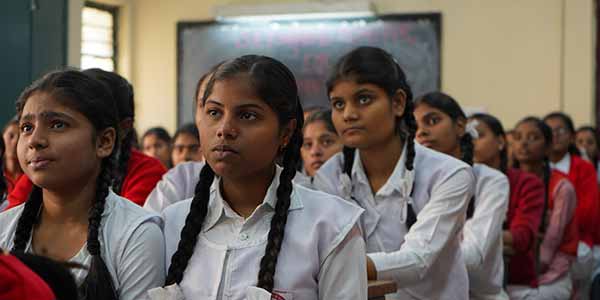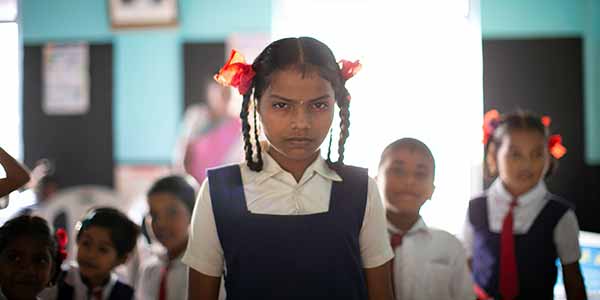The Indian education system is vast in terms of the organizations involved both directly and indirectly and the number of students it caters to. Indian government tries its best to bring in reforms to the sector but the sheer size of the country is overwhelming. Indian education is commonly divided formally into such stages as primary, secondary and then college. Let us look at how education was dealt with in different eras of the Indian civilization.
Education in Ancient India
Indian education in the Ancient era leads back to the third century BC. During those periods, sages and scholars taught their students orally. Later, they taught using palm leaves and barks of trees for paper and ink made of dyes.
In ancient India mostly temples and religious places took the role of modern-day schools. Gradually the concept of Gurukul System was originated which brought education as a full-time practice. The Gurukul system of education is one of the oldest and considered to be the most efficient on earth. Gurukuls were traditional residential schools of learning a certain set of skills and values.
At the Gurukuls, the teacher imparted knowledge of religion, scriptures, philosophy, literature, warfare, statecraft and mathematics, medicine, astrology, and history.
Education in Medieval India
The changes brought in the education system of medieval India are due to the practices followed by Buddhism and Jainism. Due to their influence, the concept of higher education was introduced and the universities at Nalanda, Ujjain, Takshila, and Vikramshila flourished.
As the Mughals invaded India they introduced the “Madrasah system of Education”. Apart from these during these, there was a significant visible Persian influence in the Indian educational system.
Indian education in the Modern era
British rule brought many drastic changes in the Indian educational system. This was embedded so strongly in our value system that we still follow it. During this period the concept of school and colleges were developed.
These schools guided the students to read and write about the concepts of arithmetic, law, astronomy, metaphysics, ethics, medical theology, science, and religion. The style and content of Indian society during the 19th century witnessed a dramatic change both inwards and outwards. The British raj introduced women's education and educational rights later became a Fundamental Right for citizens of India.
Education in modern India gained a whole new face with a huge influence of westernized education. The British employed different strategies of emotional and intellectual colonization in India, to consolidate their hold.
The insertion of western-style education was a major strategy of all. The elite section of Indian society was deeply attracted and started to get accustomed to the English culture, ideologies, and education, which facilitated the British to easily infiltrate into the Indian soil.

Changes in the Indian education system required
Rote learning needs to go
Students right from the ancient era used to mug up text from the books and reproduce again like a parrot. What is required now is to focus on understanding the concepts rather than mugging the text.
Schools should come up with small quizzes and tests that focus on testing the concepts and their application. Premiere exams like JEE tests are based on concepts in which students with a good grasp on subjects can only clear them.
Student evaluation to be holistic
Currently, students are evaluated on the basis of the marks they score in exams. It does not consider other aspects like personality development, communication, and sports to evaluate students.
The evaluation of a student's performance should be holistic that includes all aspects of a student's work in school. Evaluating solely on the way he wrote an exam paper does not give the right picture. Moreover, it pushes students to rote in order to secure good marks in exams.
Firstly, the acceptance of the new evaluation system also needs to be educated.
Focus on teacher training
Teachers play the most important role in education as they are very close to the students. For practical reasons, they are like second parents to the students. They need to be trained more to create a home-like condition in classes.
Focus on soft skills like connecting and handling of kids should be emphasized on. They need to make learning fun through creative ways of teaching. A good teacher shapes the student for the rest of life.
Use of Technology
Technology should be used extensively in the Indian education system to bring it to the level of developed countries. Schools have embraced the computer and IT as subjects in the schools. However, there is still a lot to be done regarding the level to which these subjects are taught.
When technology is introduced to students early on, they become more comfortable with it in the latter part of life. If not introduced early on, the confidence level of a student falls as they see technology as something alien. Teaching new concepts like robotics, AI, embedded systems, biotechnology in schools will make the students aware of all that is happening around the world.
More schools especially in rural
We need to come up with good quality schools in rural parts of the country. Presently the schools in rural regions are almost in a pathetic state. The infrastructure and level of teaching in these schools need to be developed big time.
A systematic way of planning and funding schools with the help of both center and state governments will boost the rural education sector.
Improve school infrastructure
Infrastructures in lots of schools are in shambles and governments need to work on them. A poor infrastructure brings down the morale of teachers and students and education then starts to suffer. This scenario is more prevalent in rural areas.
Support form non-governmental institutes like NGO's can also be taken in this regard.
Promote computer literacy
Countries with good computer literacy tend to do well in their overall human resource development. Although the government has made computers as one of the subjects in schools, they need to put more focus and weightage on this. Rural parts of the country do not seem to fare well in computer literacy.
The reason for this is the huge infrastructure requirement along with the need for well-trained teachers. Computer literacy drives across rural India will help in boosting the Indian education.
Support free education
There are many sites like Study Spectrum who support Indian education by providing free video tutorials. Supporting them to create more content would go a long way in creating an all-round education system.
There is absolutely no support from the government for organizations like us. Whatever content has been created has been our own doing and with the right investment, we could have done a lot better.
The Indian education sector has come a long way from the banyan tree below which the teaching used to take place. But it still has a long way to go before it makes its mark on the world. Careful planning and implementation from the government will surely take the Indian education system to the heights it surely deserves.



















